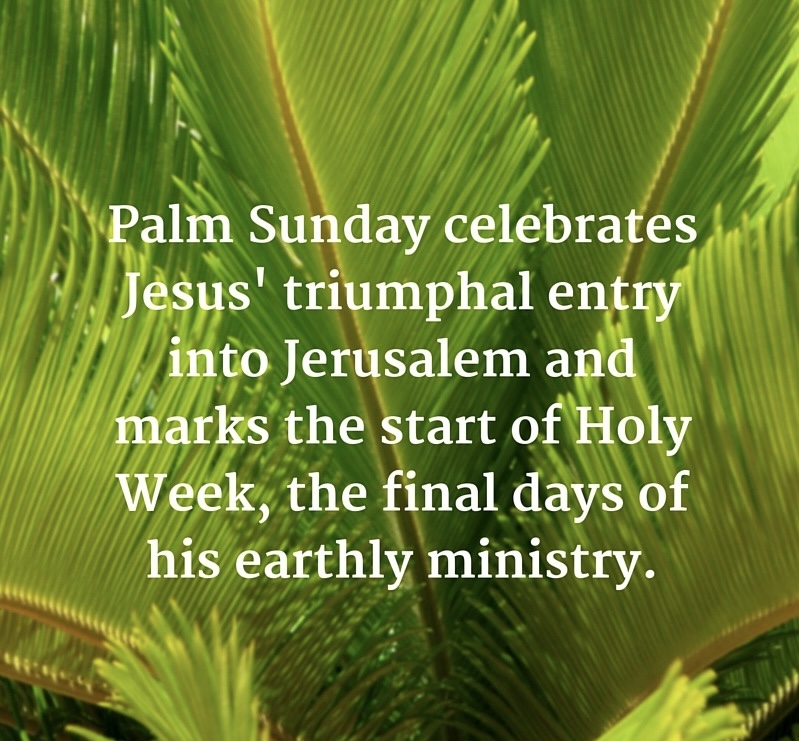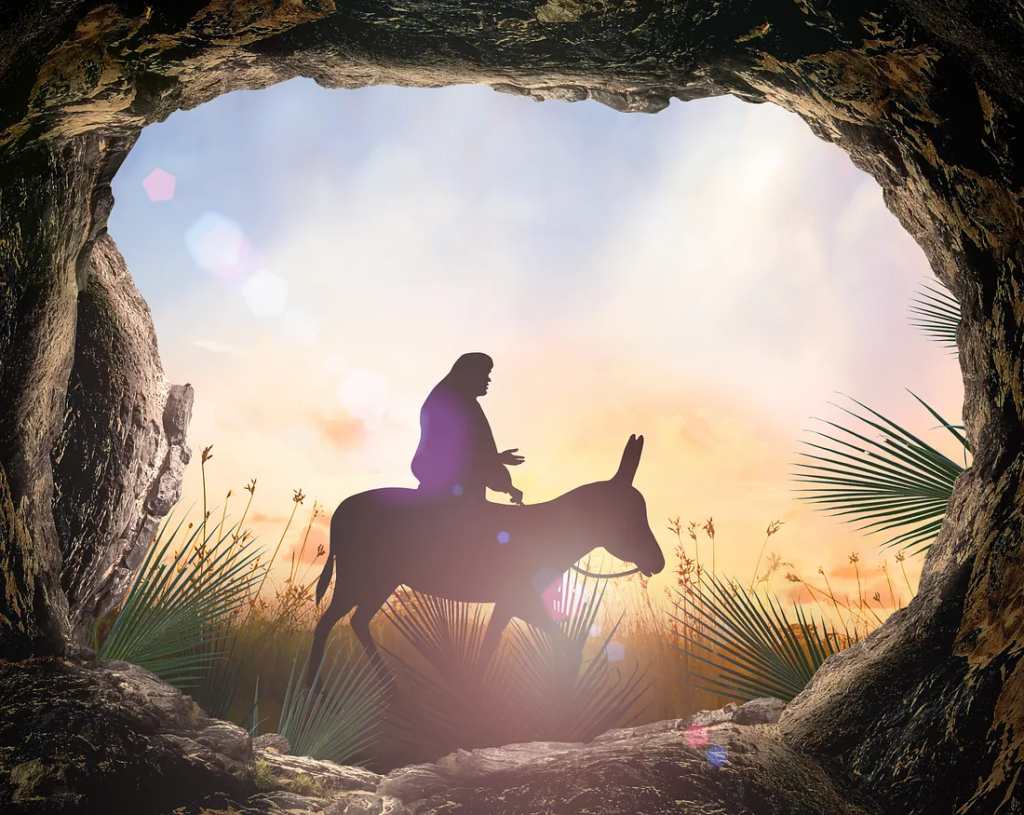Palm Sunday marks the day Jesus entered Jerusalem, a defining moment in His life and mission; also, days before his crucifixion, the heart of Palm Sunday holds His triumphal entry.
The crowds of people welcomed him by waving Palm branches in the air and shouting, “Hosanna to the Son of David! Blessed is he who comes in the name of the Lord! Hosanna in the highest!”
Thinking back upon all the Palm Sundays that I was blessed to preach His triumphal entry into Jerusalem. My heart longed for everyone to invite the Lord into their heart and to raise their palm branches every service and, yes, every day unto the Lord and bless His name.
I’m not talking about literal palm branches off of palm trees but your arms, as the branches and the palms of your hands declaring with all your heart, with the call to sing, to praise and prophecy, with the yearning to go deeper into intimacy, worship, and purpose as you declare Him King.

Lamentations 3:41
Let us lift up our hearts with our hands unto God in the heavens.
Psalm 63:2-4 (The Message)
So here I am in the place of worship, eyes open, drinking in your strength and glory. In your generous love I am really living at last! My lips brim praises like fountains. I bless you every time I take a breath; My arms wave like banners of praise to you
Palm / Kaf -Hebrew
Strong’s #H3709 – כַּף
The word Kaf’s literal meaning; “palm of the hand” Palm branches or fronds (from palm trees)
Palm – Greek #G5404- Phoinx
John 12:13: “Took branches of palm trees, and went forth to meet him, and cried, Hosanna: Blessed is the King of Israel that cometh in the name of the Lord.”

The meaning of the Palm Tree from the Hebrew “tomer, tamar” is FREEDOM, RIGHTEOUSNESS, REWARD, RESURRECTION, VICTORY. The Palm Branch represents TRIUMPH, PEACE, and ETERNAL LIFE.
To say Palm Branches;
Psalm 92:12-14
‘The righteous will flourish like a palm tree; they will grow like a cedar of Lebanon; planted in the house of the LORD, they will flourish in the courts of our God. They will still bear fruit in old age; they will stay fresh and green, proclaiming, “The LORD is upright; He is my Rock, and there is no wickedness in him.” ‘
To the Israelites, palm leaves and fronds represented victory and triumph — an emblem befitting the King of Kings.
The palm tree became the symbol of Judea where palm trees thrive and has also become an emblem of Israel
“Blessed is He who comes in the name of the Lord.”
In Hebrew
“Baruch haba beshem Adonai”
“And those who went before and those who followed were shouting, ‘Hosanna! Blessed is he who comes in the name of the Lord! Blessed is the coming kingdom of our Father David! Hosanna in the highest!’” —Mark 11:9-10
Prophecy fulfilled
Psalm 118:25 Hallel
The people who were celebrating Jesus’ arrival in Jerusalem were quoting ;
Psalm 118:25-26 “Save us, we pray, O LORD! O LORD, we pray, give us success! Blessed is he who comes in the name of the LORD!” The phrase “Save us, we pray” (Hebrew “Hosanna.”118:25).
The Hebrew word “hoshi’a na
Psalm 118:25 Hosanna Praise an Aramaic cry to God for salvation, which became a shout of praise Hebrew Hoshiana “hoshiya na” Hebrew words- יָשַׁע– “Yasha,” which means “to save or deliver,” and אָנּאָ – “anna,” which means “please, I beseech.
Psalm 118:26
Blessed is he who comes in the name of the Lord! We have blessed you from the house of the Lord.
Hosanna,’ which is a supplication for God’s salvation, was the shout of praise or adoration made in recognition of the Messiahship of Jesus, Yeshua, on his triumphal entry into Jerusalem,
“Hosanna: Blessed is the King of Israel that cometh in the name of the Lord.”
John 12:13
In the Old Testament -Hebrew ‘ho•shi•ah na,’
“Save us, we beseech you, O Lord! O Lord, we beseech you, send us prosperity!”
Psalms 118:25
Riding into the city
In biblical times, when someone rides into a city on a horse, it is usually to announce the presence of royalty. It could also indicate an intention to make war.
So when the people saw Jesus ride in on a colt of a donkey, He sent a clear message to everyone.
Prophecy fulfilled
Zachariah 9:9 –
“Rejoice greatly, O daughter of Zion!
Shout, O daughter of Jerusalem!
Behold, your King is coming to you
He is just and having salvation, Lowly and riding on a donkey, a colt, the foal of a donkey
A donkey in ancient times is a sign of peace. Everyone should have understood that Jesus was not there to set Himself up as a king or to declare His intention to overthrow the existing government.
Yet, the people still cheered Him. It was this display of affection that frightened the power structure of religion, the deep state we will call it; then, they determined to put Jesus to death.
The triumphal entry
On the Sunday before his death, Jesus began his trip to Jerusalem, knowing that soon he would be crucified for our sins. Nearing the village of Bethphage, he sent two of his disciples ahead, telling them to look for a donkey and its colt. The disciples were instructed to untie the animals and bring them to him.
Then Jesus sat on the young donkey and slowly, humbly, made his triumphal entry into Jerusalem, fulfilling the ancient prophecy in Zechariah 9:9:
As He approached, a vast crowd spread their cloaks on the road while others cut branches from palm trees, laying them before Him. Many cheered His arrival; after a few days, the shouts of praise turned into shouts of “ Crucify Him.”
Among many there that day, they had either seen the miracles or received one. Our Lord healed the blind, cured ten lepers, and ate dinner with a tax collector; Salvation came to Zacchaeus’ house because Jesus came to his house.
He fed the 5,000
Cast out unclean Spirits.
Jesus calmed the storm.
Jesus raised Lazarus from the dead.
Thousands of people began to swarm to Jerusalem in preparation for the Passover,
(Jesus is the fulfillment of the Passover Lamb)
the story of Lazarus’s resurrection and all the Lord’s miracles spread even further, and Jesus became the very topic of conversation among the masses.
After Jesus entered Jerusalem, He ate Passover dinner with the disciples in the home of Simon the Leper, And a woman anointed Jesus feet for his burial before his death. It was the task of the most lowly slave. Her actions denoted great humility and devotion in anointing Jesus’ feet.
In pouring this ointment on my body, she has done it to prepare me for burial,” Jesus told the others at the table.
—Matthew 26:12
Buried with Christ, risen to life in Him. Mary knelt before the Savior. Judas did not.
“And it is God who establishes us with you in Christ, and has anointed us, and who has also put his seal on us and given us his Spirit in our hearts as a guarantee.”
—2 Corinthians 1:21-22

The raising of Lazarus is an appropriate prelude to a celebration of Holy Week, both because it foreshadowed Jesus’ coming resurrection.
This prophecy was fulfilled when Jesus entered Jerusalem, riding on the foal of a donkey’s colt, demonstrating His humility and reinforcing His identity as the promised Messiah; Yeshua Hamashiach means “Jesus The Messiah.”

